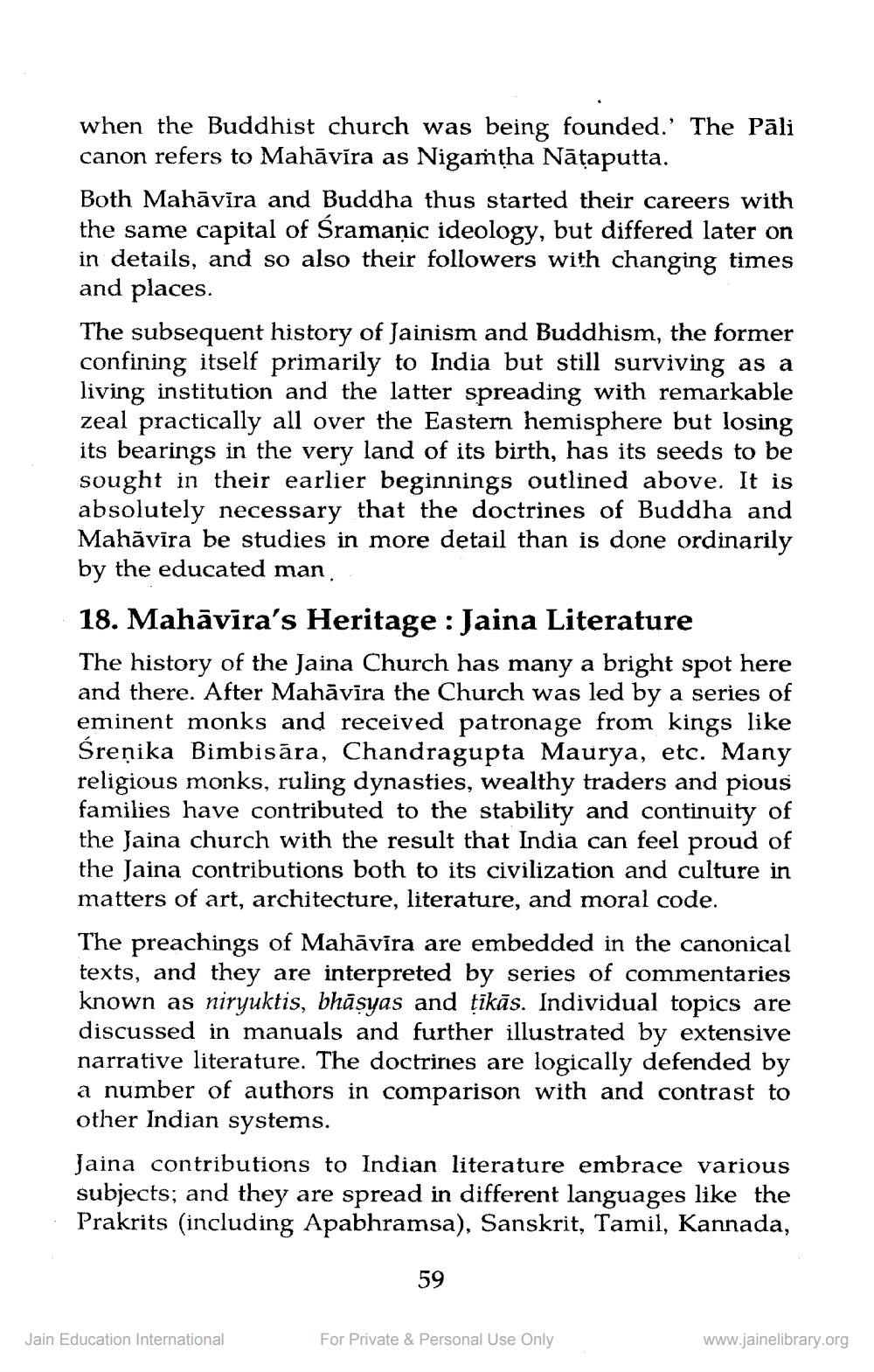________________
when the Buddhist church was being founded.' The Pāli canon refers to Mahāvīra as Nigamtha Nātaputta. Both Mahāvīra and Buddha thus started their careers with the same capital of Sramaņic ideology, but differed later on in details, and so also their followers with changing times and places. The subsequent history of Jainism and Buddhism, the former confining itself primarily to India but still surviving as a living institution and the latter spreading with remarkable zeal practically all over the Eastern hemisphere but losing its bearings in the very land of its birth, has its seeds to be sought in their earlier beginnings outlined above. It is absolutely necessary that the doctrines of Buddha and Mahāvīra be studies in more detail than is done ordinarily by the educated man. 18. Mahāvira's Heritage : Jaina Literature The history of the Jaina Church has many a bright spot here and there. After Mahāvīra the Church was led by a series of eminent monks and received patronage from kings like Śreņika Bimbisāra, Chandragupta Maurya, etc. Many religious monks, ruling dynasties, wealthy traders and pious families have contributed to the stability and continuity of the Jaina church with the result that India can feel proud of the Jaina contributions both to its civilization and culture in matters of art, architecture, literature, and moral code. The preachings of Mahāvira are embedded in the canonical texts, and they are interpreted by series of commentaries known as niryuktis, bhāsyas and tīkās. Individual topics are discussed in manuals and further illustrated by extensive narrative literature. The doctrines are logically defended by a number of authors in comparison with and contrast to other Indian systems. Jaina contributions to Indian literature embrace various subjects; and they are spread in different languages like the Prakrits (including Apabhramsa), Sanskrit, Tamil, Kannada,
59
Jain Education International
For Private & Personal Use Only
www.jainelibrary.org




